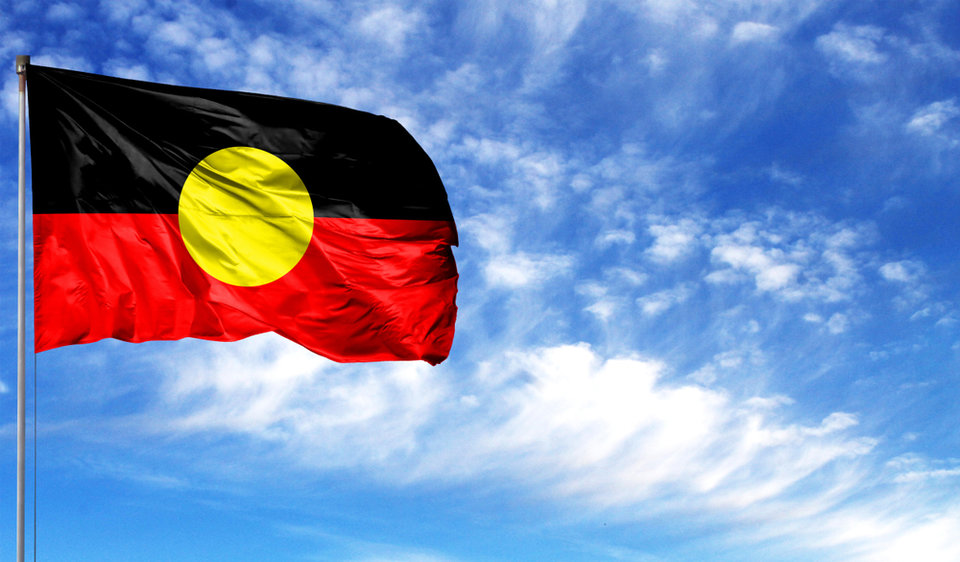
POLICY
Protecting the people: could an Australian legal reform help minimise the damage of mining?
Rio Tinto’s destruction of an aboriginal heritage site at the Juukan Gorge caused outrage, led to the removal of many of the company’s executives, and triggered a new draft for mining legislation in Western Australia. Could the law help address the exploitative power dynamic in mining? JP Casey finds out.
I
n May, Rio Tinto aimed to expand its iron ore operations in the Pilbara region of Western Australia by destroying two caves in the Juukan Gorge. While the region has unquestioned mineral potential, with eight million tonnes of high-grade iron ore worth around $96m, the destruction of sites with evidence of human habitation dating back 46,000 years was in direct opposition to the will of the Puutu Kunti Kurrama and Pinikura (PKKP) peoples, the traditional owners. The destruction caused outrage in Australia and around the world.
A months-long inquiry has further undermined the reputation of the miner, with Western Australian Senator Pat Dodson accusing the company of “incremental genocide”. It was also revealed that between 2012 and 2013, Rio Tinto had been offered four alternative mining expansion projects in the area, none of which would have destroyed the caves. Rio Tinto’s response has been swift, dismissing its chief executive of iron ore and group executive of corporate relations, while CEO Jean-Sébastien Jacques will leave the company in March 2021 once a successor can be identified.
Yet some of the most significant impacts could be on the mining laws of Western Australia, which have long favoured mineral expansion over environmental and social protection, and which could be rapidly reformed in response to the Juukan Gorge incident.
The state’s current laws, for instance, do not allow consent to be renegotiated should new information be provided, a loophole that some consider was instrumental in giving Rio Tinto the legal cover to destroy the caves. In response, the state government has sought public responses to its Aboriginal Cultural Heritage Bill, a proposed law that would help address the imbalance, and could set a precedent for the protection of Aboriginal groups in the country’s mining industry.
Empowered Aboriginal groups
The proposed legislation aims to expand the role of Aboriginal groups in the decision-making process with regard to mining operations in the state, both in terms of spirit and letter. Tangible changes include the establishment of an Aboriginal Cultural Heritage (ACH) Council and the ACH Management Plan.
The former is an extension of the state government with a broad remit to promote public awareness of Aboriginal issues and aid in the management of sites of cultural value to Aboriginal groups, the latter, an environmental and social impact assessment co-ordinated by the ACH Council that will need to be conducted ahead of the completion of any large-scale industrial operations in the state.
The bill will also expand the understanding of “Aboriginal cultural heritage” to include a much wider range of aspects of Aboriginal culture. Racheal King, a partner at law firm Corrs Chambers Westgarth, argued that the bill would include “recognition of the strong spiritual perspective in Aboriginal culture, particularly given the oral history and story-telling traditions”.
There is optimism that the new bill will slot seamlessly into the state’s legal framework.
This expanded definition of what can be considered a site of cultural and historic importance could help protect areas like the caves of the Juukan Gorge, whose importance are tied to historic and symbolic significance above all else.
King also noted that the bill “is likely to effectively protect a broader range of values, similar to the notions of ‘interference’ with community and social activities and areas or sites of particular significance embedded in the Native Title Act 1992”. By tying this latest piece of legislation to existing laws protecting Aboriginal interests, there is optimism that the new bill will slot seamlessly into the state’s legal framework.
BHP agreed to hold off on destroying heritage sites in the same region as the Juukan Gorge cave.
This change in emphasis, alongside legal precedent, could help deliver meaningful change in the immediate-term. The Responsible Mining Foundation (RMF), a Switzerland-based research organisation that works to help both companies and local groups to benefit from the mining industry, has been broadly supportive of this new legal framework, and is optimistic about its benefits.
“It is hoped that the loss of the Juukan Gorge site will mark a turning point for government regulation of cultural heritage sites,” explained Pierre de Pasquale, head of stakeholder engagement at the RMF. “At the same time, public outcry in Australia over the blasting of the site and investors’ criticism of the incident may lead to a more thoughtful and considerate approach in the mining industry.
“After the catastrophe in June, BHP agreed to hold off on destroying heritage sites in the same region as the Juukan Gorge cave, for which it had received approval from the government.”

// Sydney Opera House by night with Aboriginal art projection on it at the Vivid Festival 2016. Credit: J. Photos / Shutterstock.com
Questions and challenges remain
Despite these positives, questions remain about the effectiveness of the bill, which has been met with the usual combination of arguments that its measures go too far, or not far enough. Among many of the 158 published responses to the bill, which can be read on the Western Australian Government’s website, there is a common thread that a lack of information and clear definitions could fundamentally undermine the bill and its aims.
The Association of Mining and Exploration Companies (AMEC), a 325-member industry body based in Australia, for instance, raised concern with a lack of definitions for “minimal”, “low”, “medium”, and “high” environmental impact designations, which would determine whether a potential mining project would need to be subject to an ACH Management Plan. Similarly, and perhaps ironically considering its opposing viewpoint to the AMEC, the Yamatji Marlpa Aboriginal Corporation (YMAC), a parallel body representing the interests of native title-owners in Western Australia, argues that there is “too little information available to fully assess the impact of the bill”.
There is “too little information available to fully assess the impact of the bill”.
In addition to the AMEC and YMAC, the RMF, a more neutral party, has raised questions as to the thoroughness of the bill, as it permits what de Pasquale called an “at all costs” approach to mining. “We need mining for sure, but do we need mining ‘at all costs,’ regardless of the impacts on peoples and the environment?” he asked.
This idea of mining at all costs, despite the will of traditional landowners, speaks to a more fundamental issue with the bill. The proposed law asserts that the Western Australian Government has the authority to determine matters such as the composition of the ACH Council, a position that is challenged by many Aboriginal groups.
The new bill still positions Aboriginal cultural heritage as being somehow owned by the state of Western Australia.
The PKKP Aboriginal Corporation, representing the interests of the group most harmed by the Juukan Gorge incident, wrote that “the new bill still positions Aboriginal cultural heritage, heritage that Traditional Owners have serious responsibilities to protect, as being somehow owned by the state of Western Australia and something that a minister of the state has the power to make decisions over”.
“This is not right and of deep concern to us”, the group continued, highlighting a fundamental divide between Aboriginal groups, who consider themselves to have the exclusive authority to decide on such matters, and both state and private actors, which are happy to negotiate amongst themselves for mining exploration licenses. This distinction speaks to a more entrenched divide on the topic of land ownership in Australia and will not be solved by this bill, or arguably any single piece of legislation, so concerns remain surrounding the long-term effectiveness of these reforms in general.
A collaborative future
Perhaps the only way to bridge this fundamental divide would be a legislative framework that shifts the balance of power from private companies to Aboriginal groups, a dynamic that de Pasquale says could actually align with those companies’ economic interests.
“Some companies have demonstrated leading practices on respecting rights, needs, and aspirations of indigenous peoples in other jurisdictions, without losing market shares,” he explained. “Companies can start by following the example of some of their peers, who systematically screen prospective investments to determine if sites are in or adjacent to World Heritage Sites or other protected areas, to ensure that they avoid operating in internationally recognised areas of outstanding natural or cultural values.”
One such company is Albemarle, the world’s largest lithium producer, which has taken steps to work with, not against local groups at its facilities around the world. The company has begun work on a communications network to monitor water scarcity at its facilities in Chile, aiming to minimise one of the key environmental and human health impacts of its industrial operations.
The pieces are beginning to be put in place to address this imbalance, to the benefit of all parties.
This move is in line with the recommendations made by the Business and Human Rights Resource Centre for miners in the region: to “carry out an independent evaluation, with the support of partner organizations, on the current state of the salt flats and the impacts that have occurred or will occur in their natural environment due to the presence of the lithium industries, with the aim of taking measures to protect their rights”.
While it is true that the work of Albemarle maintains the traditional and exploitative power dynamic that exists between powerful mining companies and local peoples, steps such as the water scarcity monitoring centre are an important first step in bringing local and social issues to the attention of these companies, and helping to ensure that their needs and interests are not left by the wayside. Like Western Australia’s proposed legislation, this imbalance will not be corrected over the next year or so, but the pieces are beginning to be put in place to address this imbalance, to the benefit of all parties.
// Main image: 3D System Model and Completed Installation. Credit: Deimos